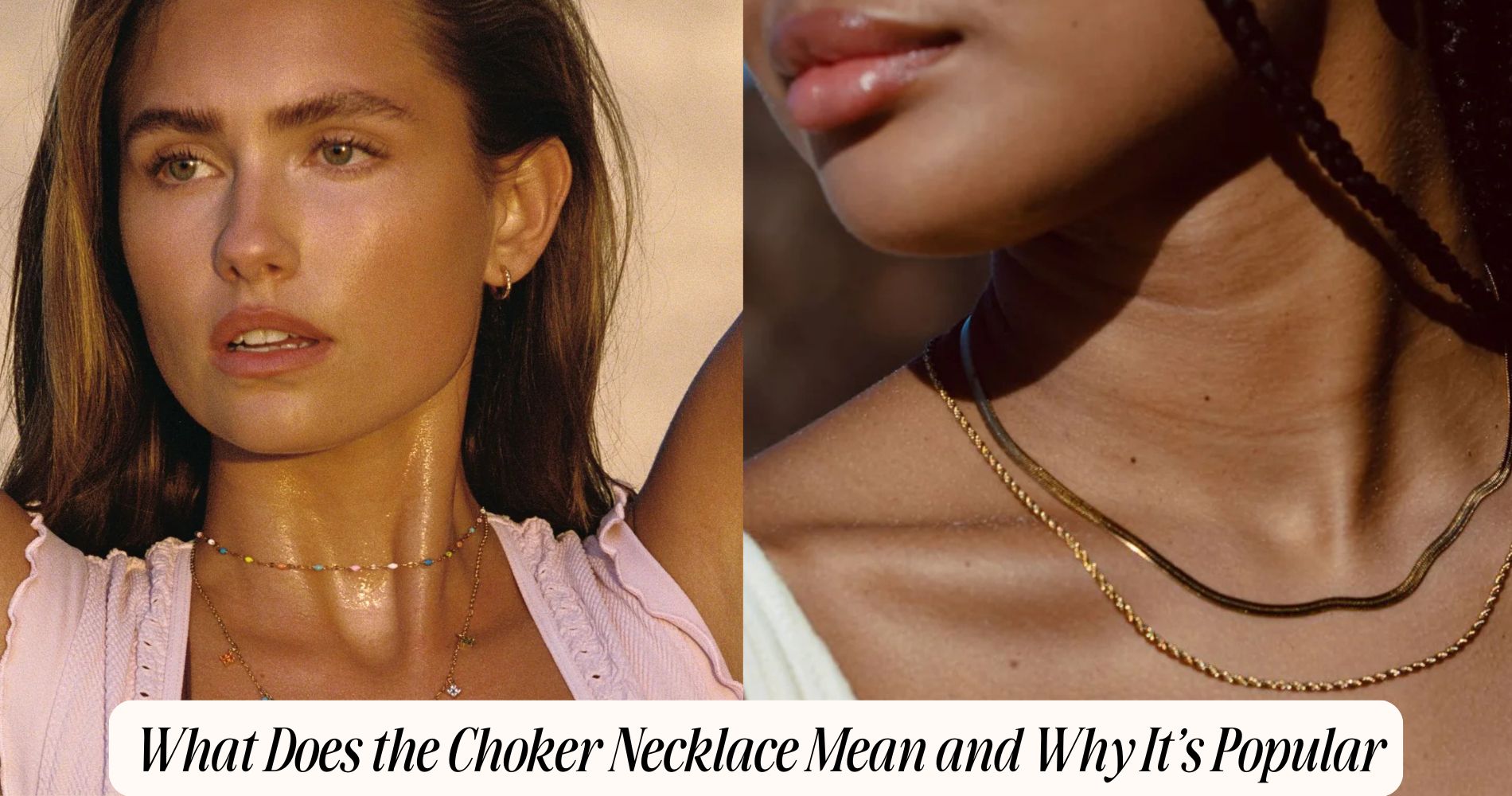
What Does the Choker Necklace Mean and Why It’s Popular
If you’ve ever wondered what does the choker necklace mean, the answer goes far beyond fashion. A choker signals control, confidence, and a hint of rebellion—sensual armor that frames your neck without overexposure. Its story stretches from Egyptian collars to Victorian lace to ’90s tattoo bands, and today it shifts to match your vibe. Velvet feels romantic, leather leans edgy, and metal looks powerful; snug fits feel bold, while looser styles stay effortless. And if you want a version you can wear daily without worrying about tarnish, a piece from our waterproof-necklaces collection brings the same statement energy with long-lasting shine. It’s a fast, flexible style upgrade that works with tees, slips, or blazers—and the meaning behind each choice becomes even more intriguing.
A Brief History of the Choker Across Eras
Though it looks modern, the choker’s story stretches centuries. You can trace it from ancient Egypt and Mesopotamia, where close-fitting bands signaled status and protection, to classical Greece and Rome, where metal collars framed the neck like armor.
In the Renaissance, you’d see velvet ribbons and pearls accent courtly looks. By the 18th century, red ribbons hinted at French salon chic.
Victorian fashion refined the choker with lace, jet, and cameos, pairing it with corseted silhouettes and high drama.
In the 1920s, you’d spot sleek Art Deco versions. Mid-century tastes softened, but the 1970s revived leather and velvet. The 1990s made plastic tattoos and satin ties mainstream.
Today, you mix minimal chains with punk influence—studs, spikes, and layered metals—bridging past and present.
Symbolism: Rebellion, Sensuality, and Power
Defiance meets allure in the choker’s most enduring symbols: rebellion, sensuality, and power. You wear it to claim space, not ask for it. As a band close to the pulse, it telegraphs control—of your image, your boundaries, your narrative.
The fit matters: a sleek ribbon whispers restraint and intent; a metal collar states authority. Either way, it’s a rebellious expression that resists softness without losing elegance.
You also tap its sensual allure. Because it frames the neck—the body’s subtle spotlight—it suggests intimacy without overexposure. That tension feels modern: bold yet minimal, provocative yet composed.
Choose details that match your message—studs for edge, velvet for softness, chain links for strength. A choker doesn’t just accessorize; it amplifies your presence.
Cultural Moments That Shaped the Trend
From royal portraits to punk stages to ’90s TV, chokers keep popping up at cultural inflection points that reshape their meaning.
You see them first in court paintings, signaling status and control. Then you catch them in avant-garde salons, where fashion revolutions challenge old rules. By the 1970s, punk puts chokers on frontline rebels; you read them as armor against conformity.
In the ’90s, teen idols and alt icons make them mainstream—still edgy, now relatable.
You also feel how social movements recast the choker. Suffragettes, queer communities, and riot grrrl scenes use it as shorthand for visibility and voice.
Today, TikTok revivals remix those signals, letting you claim identity, flirt with nostalgia, and nod to power without saying a word.
Materials and Designs That Change the Message
While the choker’s silhouette stays simple, its material and build flip the script on what it says. You read a choker’s message through materials exploration and design variations.
Velvet whispers romance; satin feels polished. Leather serves edge, while lace softens it with vintage charm. Metal coils feel industrial; a slim gold band signals minimal luxury. Pearls imply poise; stones bring intention—think onyx for grounding, opal for iridescent curiosity.
Hardware matters. A padlock hints at rebellion; a delicate clasp reads refined. Width shifts tone: thin strands look subtle; wide collars command attention. Charms personalize the story—initials, talismans, or tiny spikes.
Even the fit changes meaning: snug equals bold, slightly loose feels effortless. Mix textures, layer lengths, and edit details to nail your exact vibe.
How Celebrities and Runways Revived the Look
As street style bled into high fashion, celebrities turned chokers from nostalgia into now. You watched pop stars, actors, and fashion insiders stack velvet, chain, and diamond versions on red carpets and Instagram, and the ripple was instant.
That celebrity influence reframed chokers from 90s relics to modern armor—sharp, photogenic, and status-charged.
Designers followed with runway trends that treated the neck as the focal point. Couture houses paired sculptural collars with minimalist gowns; street-led labels matched hardware-heavy chokers with relaxed tailoring.
Campaigns and front-row moments reinforced the signal: a tight silhouette equals confidence, intention, edge.
When stylists synced tour looks with seasonal drops, you saw a feedback loop—celebrity influence sparked desire, runway trends validated it, and the choker regained cultural prime time.
Styling Tips for Different Aesthetics and Necklines
Blueprint for impact: match your choker to both your vibe and your neckline.
With a crew neck, pick a slim band to echo the clean line. V-necks love pendants or drop details that mirror the plunge. For scoop necks, choose a structured collar to anchor the curve. Pair strapless or off-the-shoulder looks with wider velvet for drama.
Channel bohemian chic with braided leather, talismans, or turquoise layers—perfect over flowy prints.
For minimalist elegance, try a sleek metal wire or a thin satin ribbon; keep it single, polished, and pared-back. Toughen a blazer with a chain-link choker; soften a slip dress with pearls.
Mix metals thoughtfully; align finishes with hardware on bags or shoes. Above all, keep scale balanced with your features and outfit.
Why Chokers Remain Timeless in Modern Wardrobes
Despite trend cycles spinning fast, chokers keep returning because they do three things brilliantly: frame the face, signal attitude, and adapt. You wear one and instantly sharpen your features, highlight your collarbones, and create a clean focal point. That focus reads as confidence—and a little rebellion.
In fashion evolution, few pieces shift as easily from velvet romance to sleek metal minimalism. You can pair a satin ribbon with slip dresses, a chain with blazers, or a pearl band with tees. The silhouette stays close to the neck, so it layers without bulk and punctuates a look without shouting.
That practicality makes chokers timeless accessories. They’re portable, customizable, and seasonless—your shortcut to polish or edge. When trends blur, a choker clarifies your style.
Frequently Asked Questions
Are Chokers Safe for People With Thyroid or Neck Sensitivity Issues?
Yes, if you choose soft, adjustable bands and avoid tight fits. Prioritize choker comfort, breathable materials, and smooth edges. If sensitivity concerns flare—pressure, redness, swallowing discomfort—remove it, rest your neck, and switch to looser, lightweight necklaces or collarbone styles.
How Do I Measure the Right Choker Length at Home?
Wrap a soft tape around your neck, add 1–2 inches for comfort. Note measurements for different choker styles. If no tape, use string, mark, then measure. Test fit with two-finger space—simple, accurate measuring techniques.
Can Chokers Be Worn in Professional or Conservative Workplaces?
Yes, if you keep it subtle. Choose minimalist choker styles in metal or leather, avoid oversized pendants, and match your neckline. Stick to neutral tones, balance with tailored pieces, and let workplace fashion norms guide your final call.
What Hypoallergenic Materials Are Best for Sensitive Skin Chokers?
Choose titanium, niobium, or surgical-grade stainless steel; they’re top metal alternatives. Opt for silicone chokers for ultra-gentle wear. You’ll also love gold-filled or platinum plating, bio-compatible plastics, and untreated leather. Avoid nickel mixes, cheap alloys, and mystery coatings.
How Do I Clean and Store Chokers to Prevent Tarnish or Stretching?
Clean chokers gently: use mild soap, soft cloth, and pat dry; avoid harsh chemicals. For storage tips, hang or lay flat, separate metals, use anti-tarnish bags, silica gel, and avoid sunlight. Cleaning methods prevent stretching and tarnish.
Conclusion
So when you slip on a choker, you’re not just accessorizing—you’re tapping into centuries of attitude. You signal rebellion or elegance, softness or power, depending on the material, width, and styling. Pair it with a slip dress, a crisp tee, or tailoring, and you instantly modernize the look. Thanks to culture-shaping icons and runway revivals, the choker stays relevant. Choose your message, stack or go solo, and let your neckline do the talking.


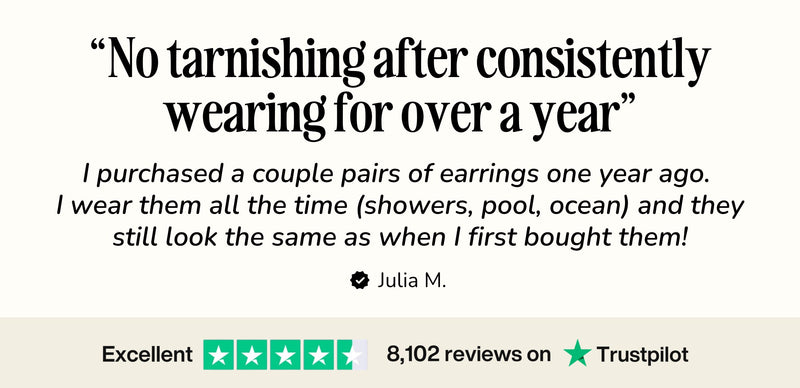



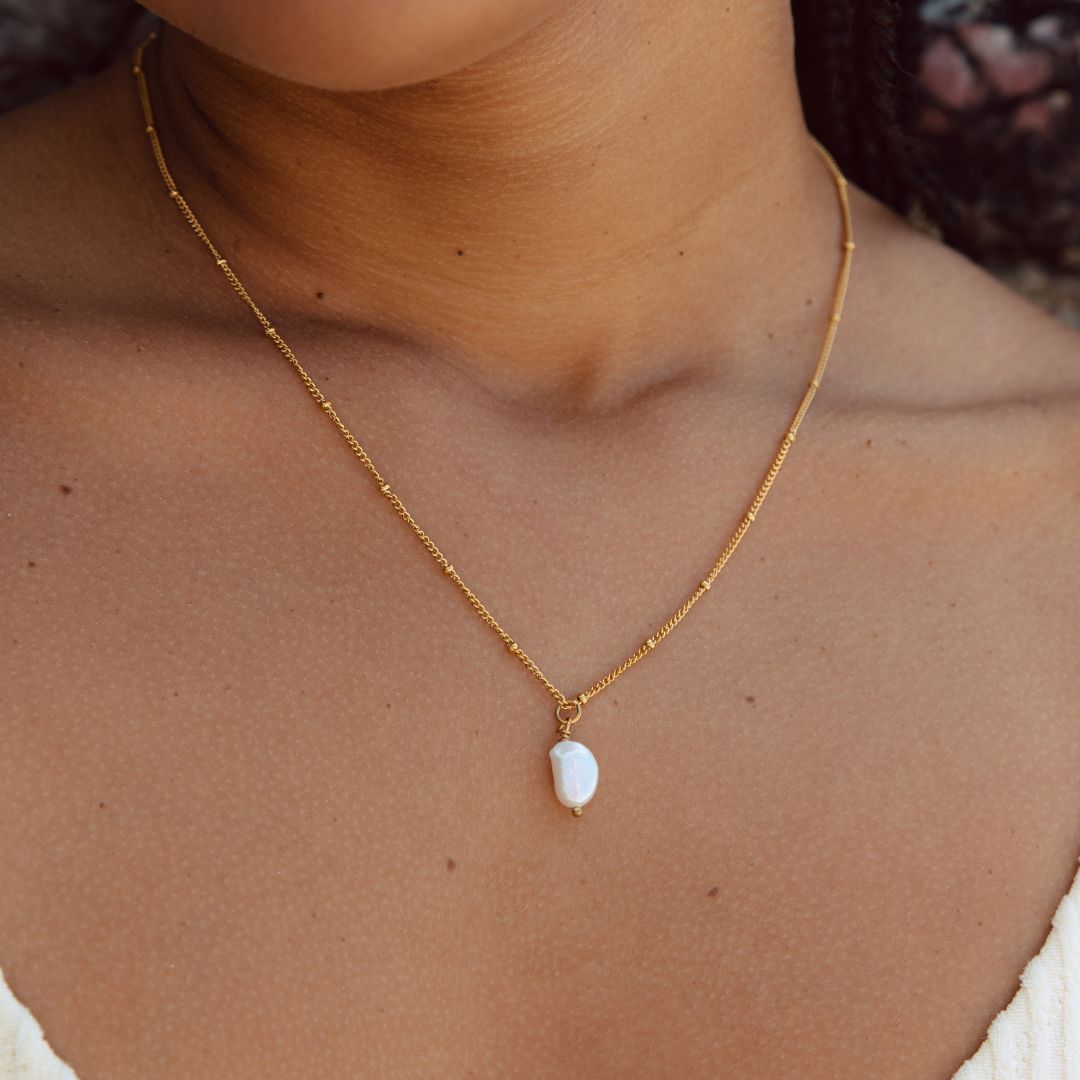
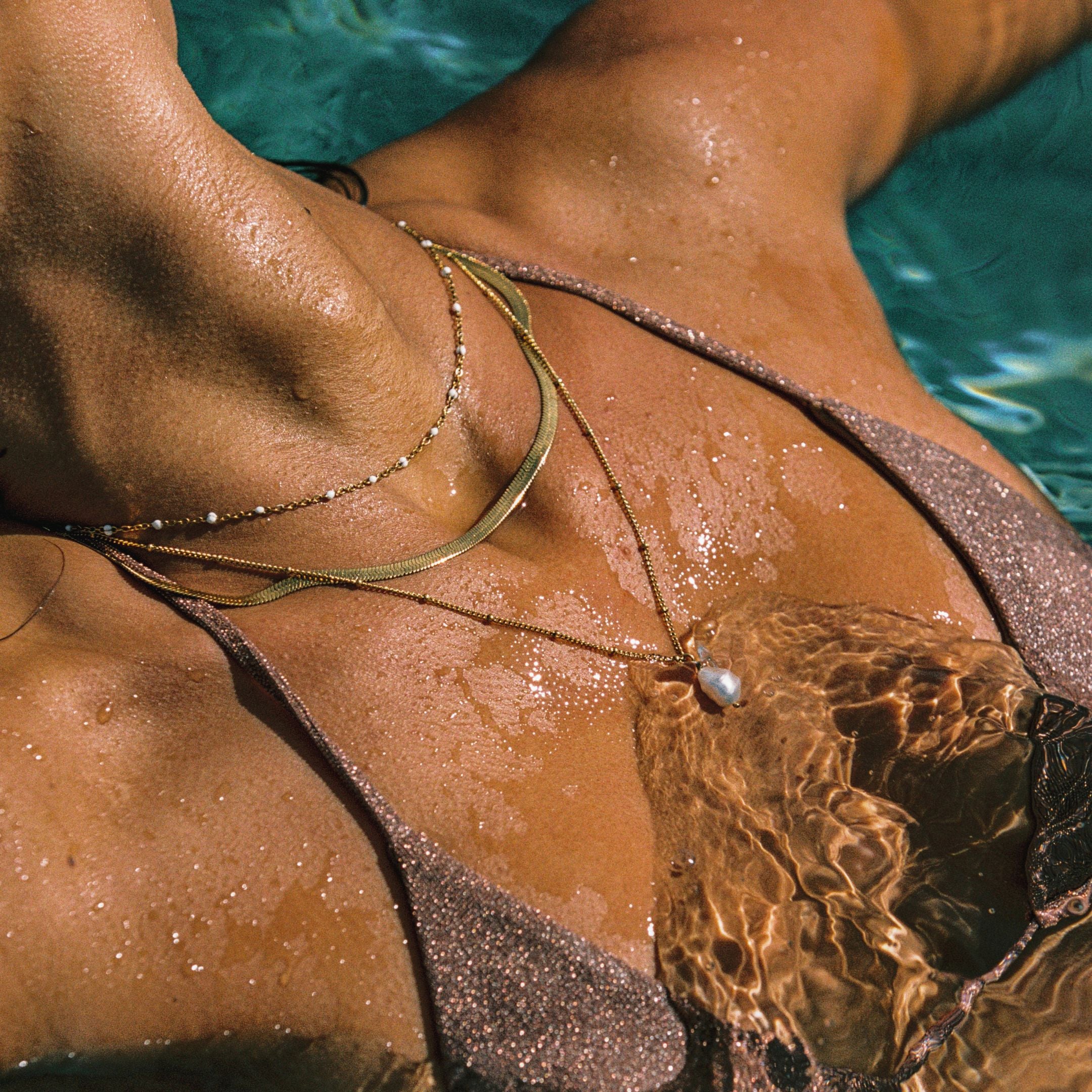
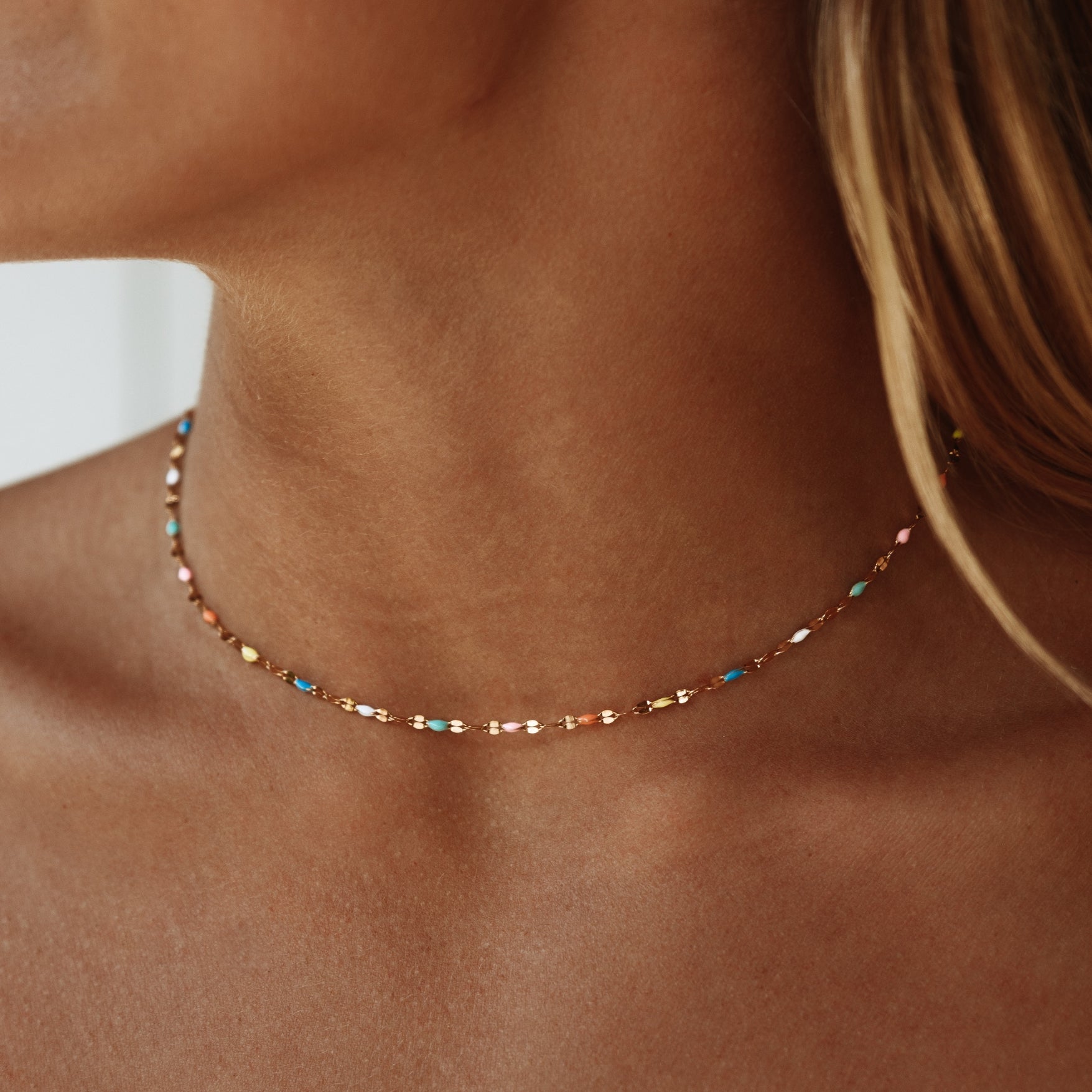
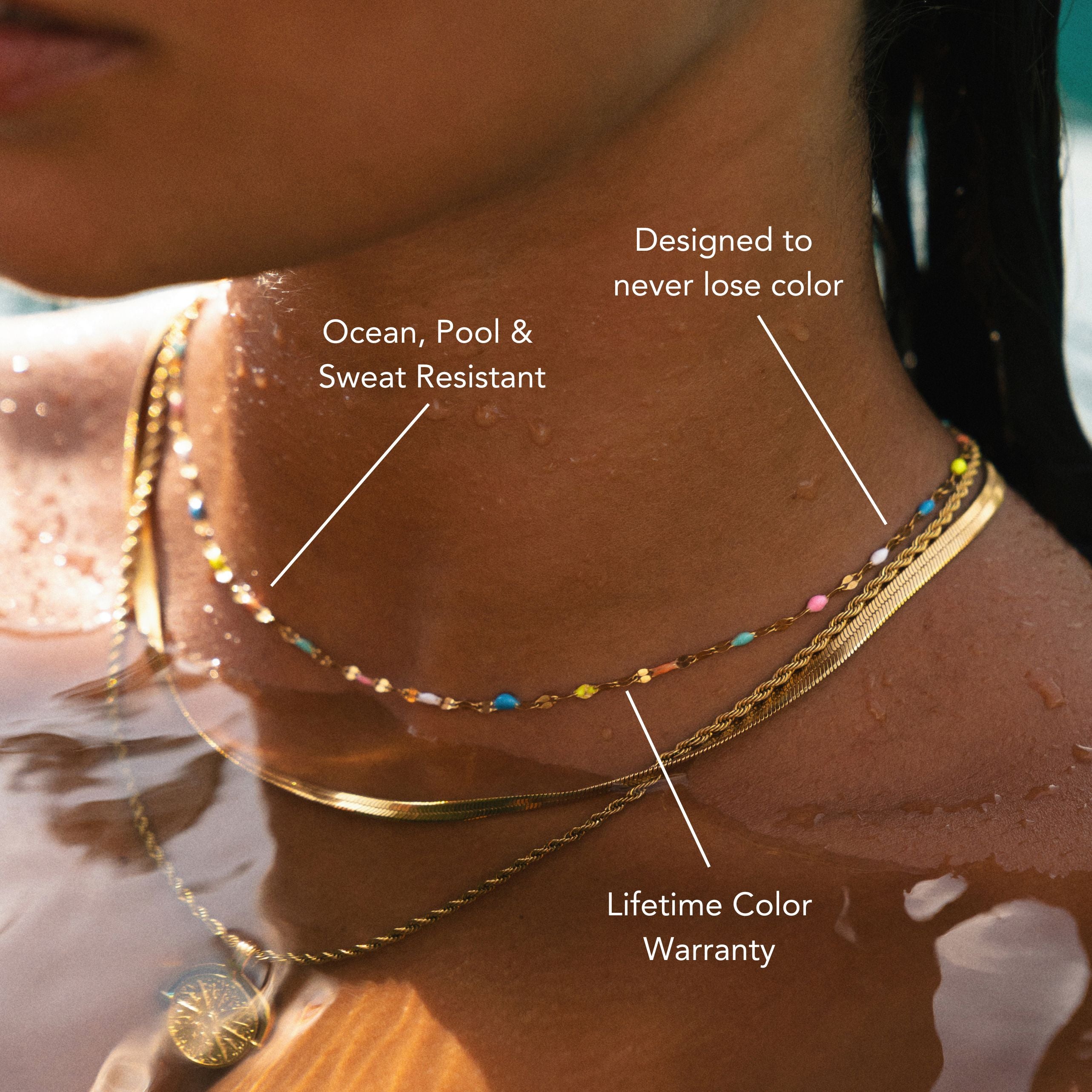
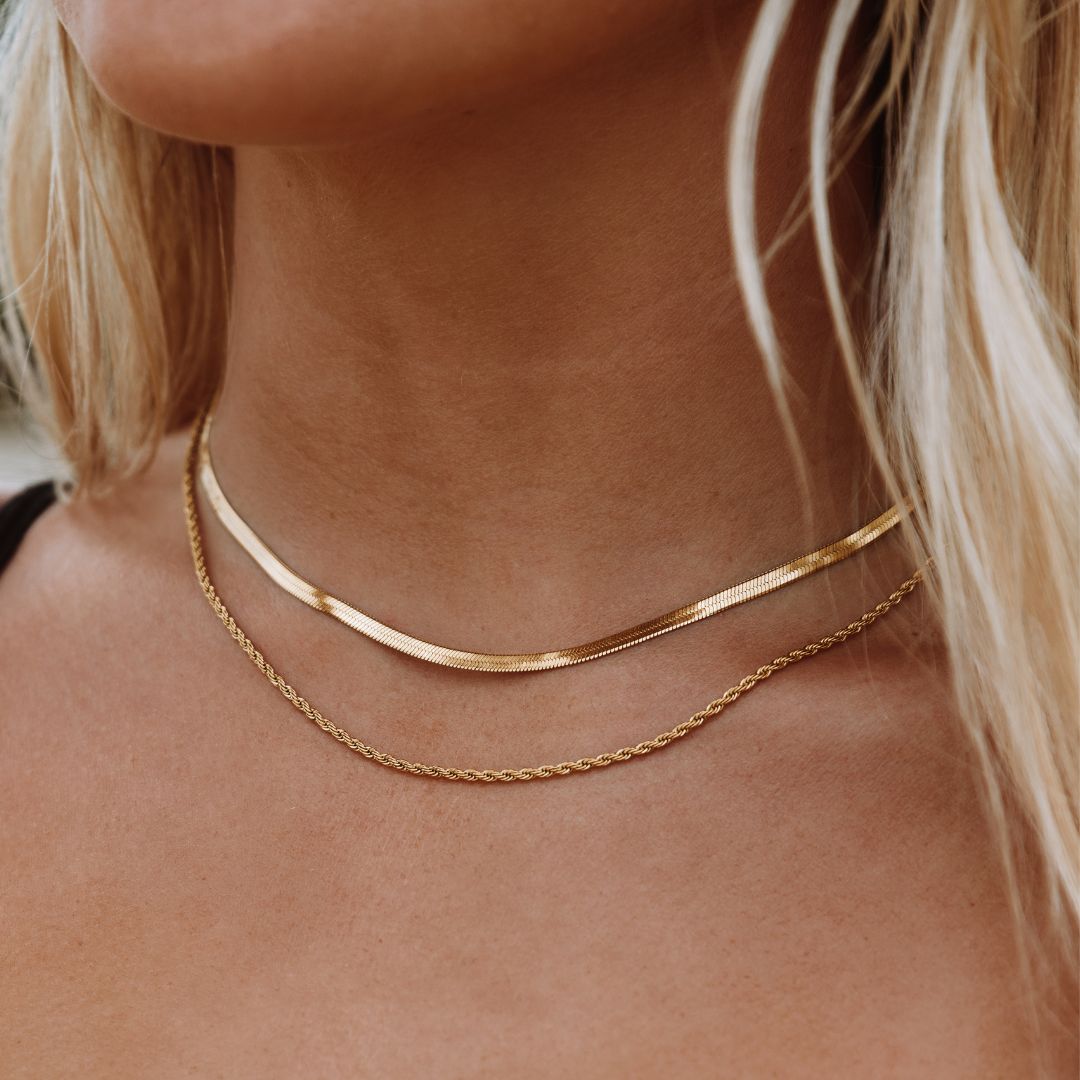
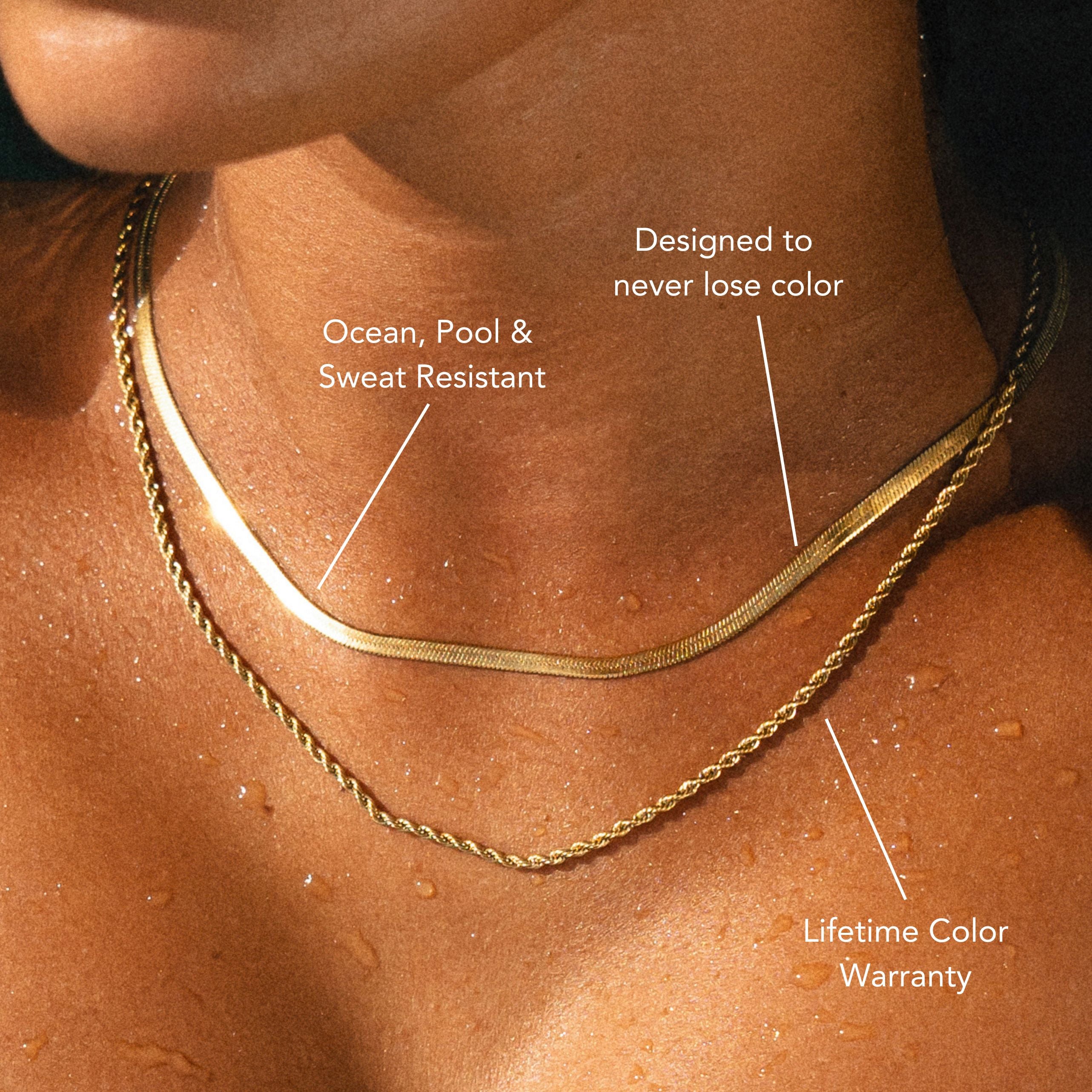
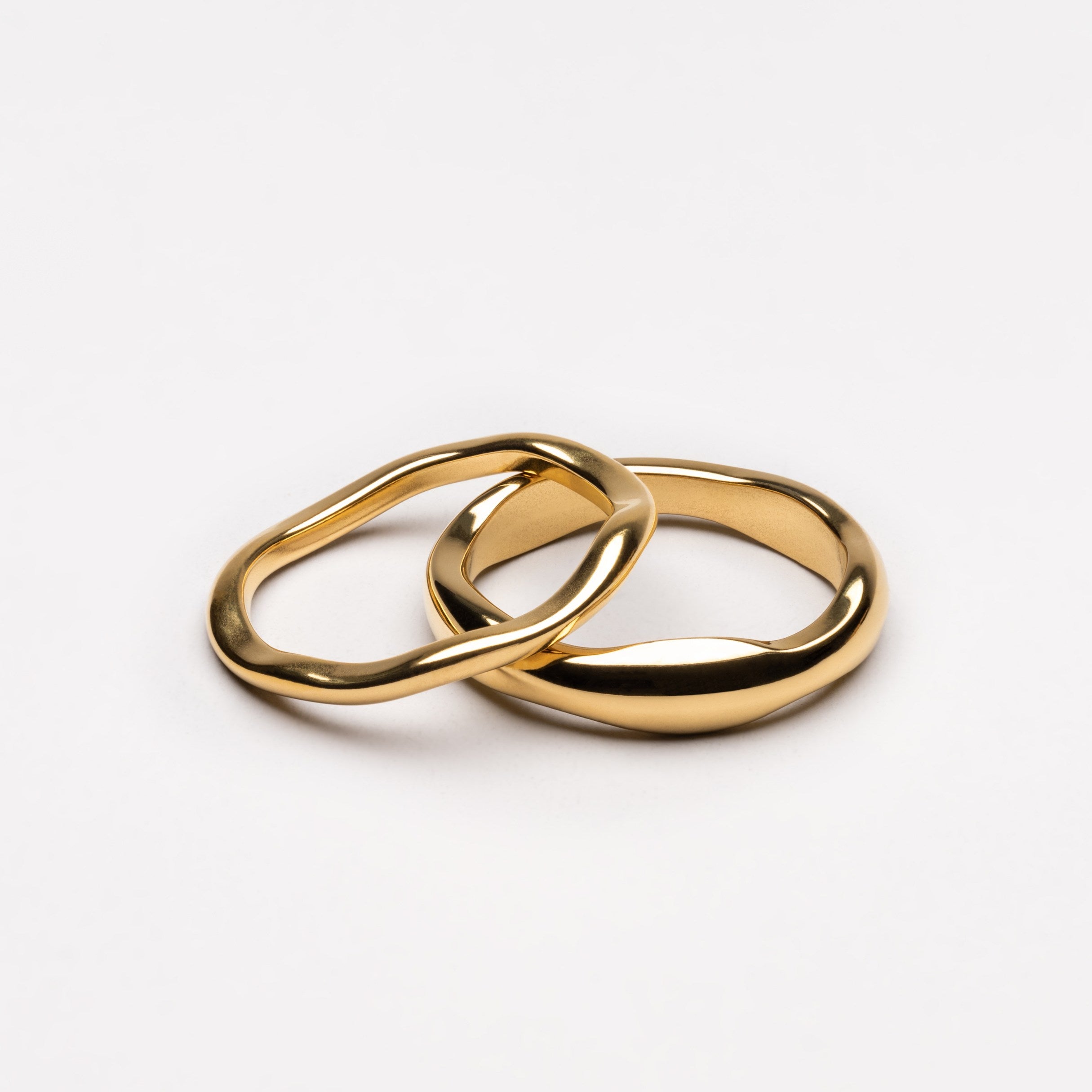

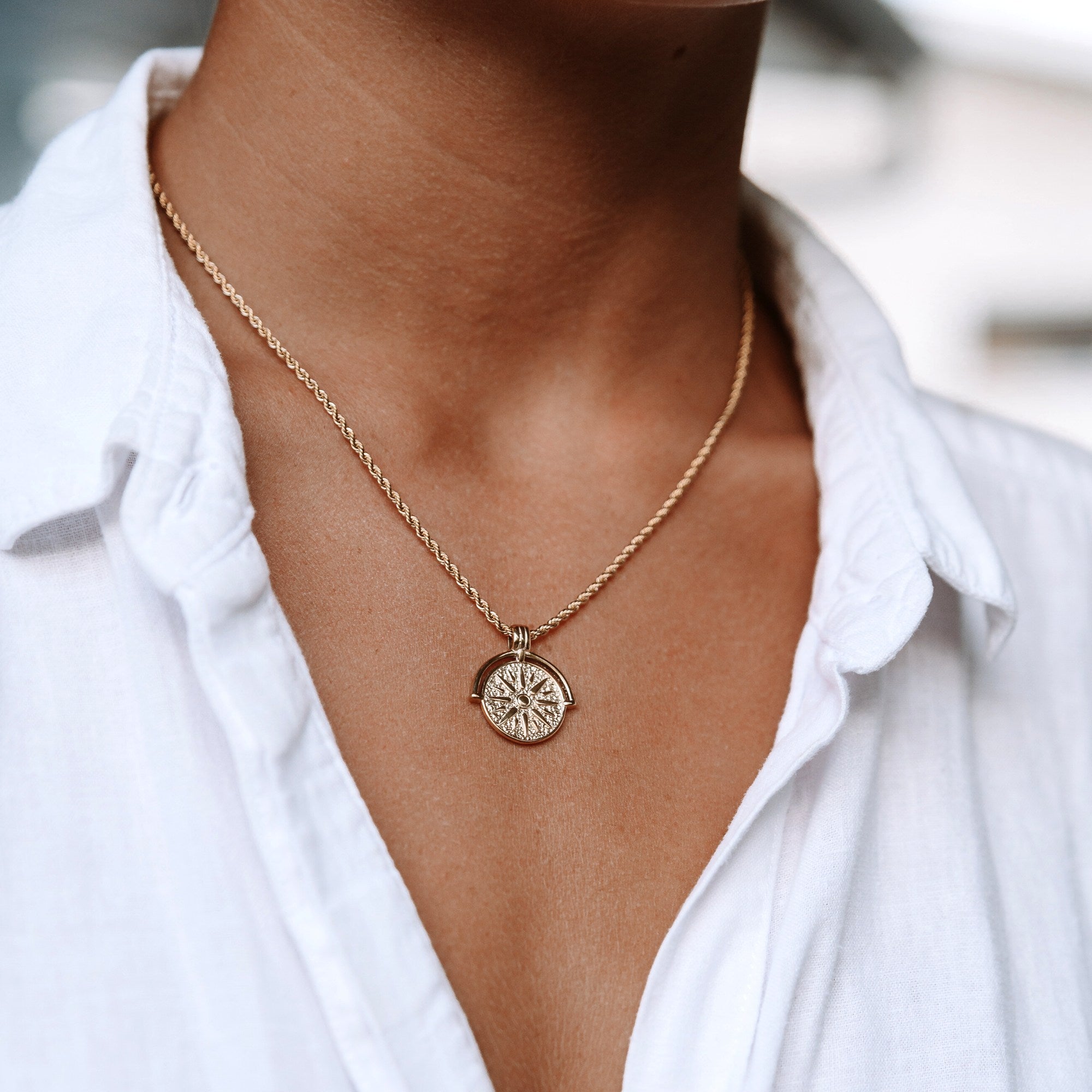
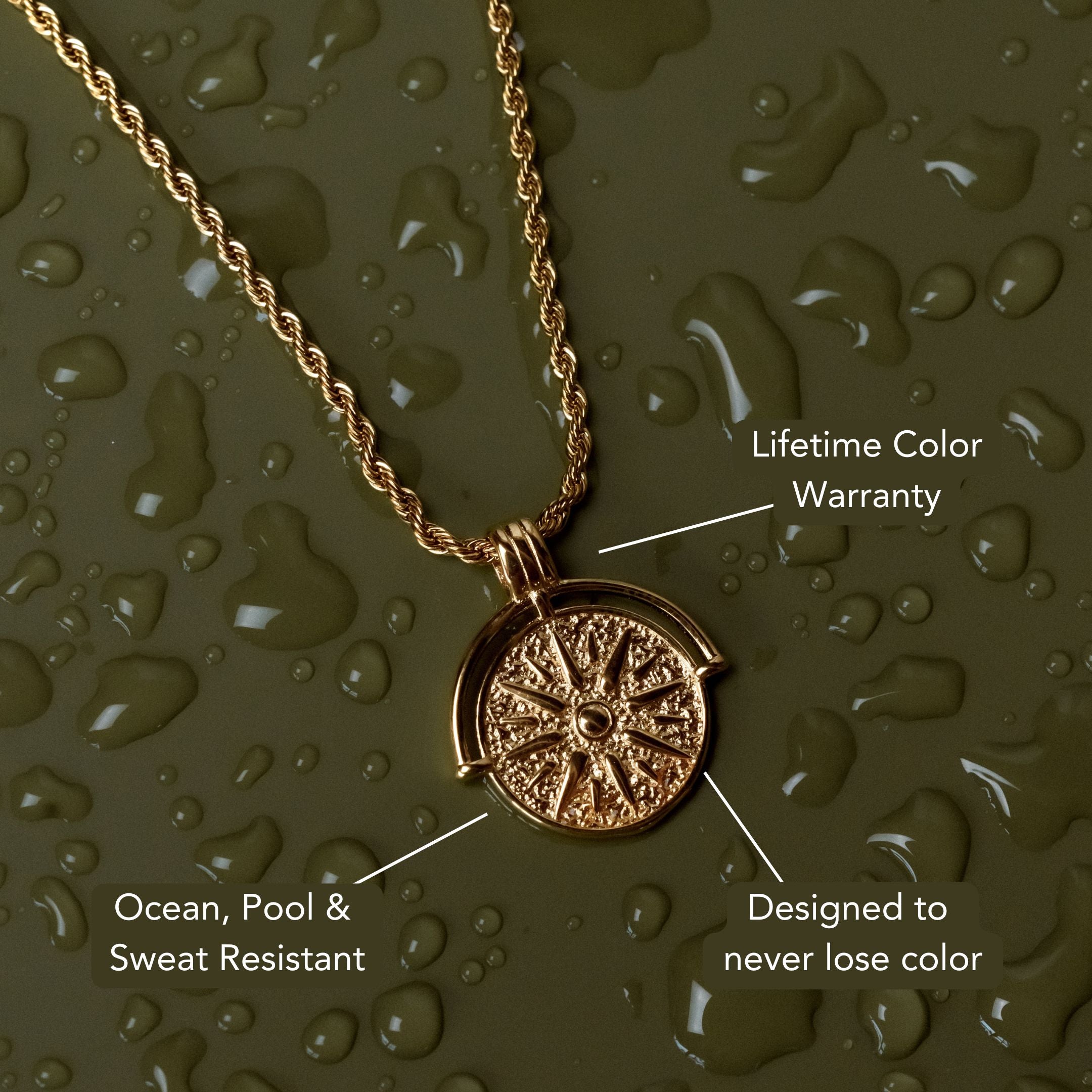

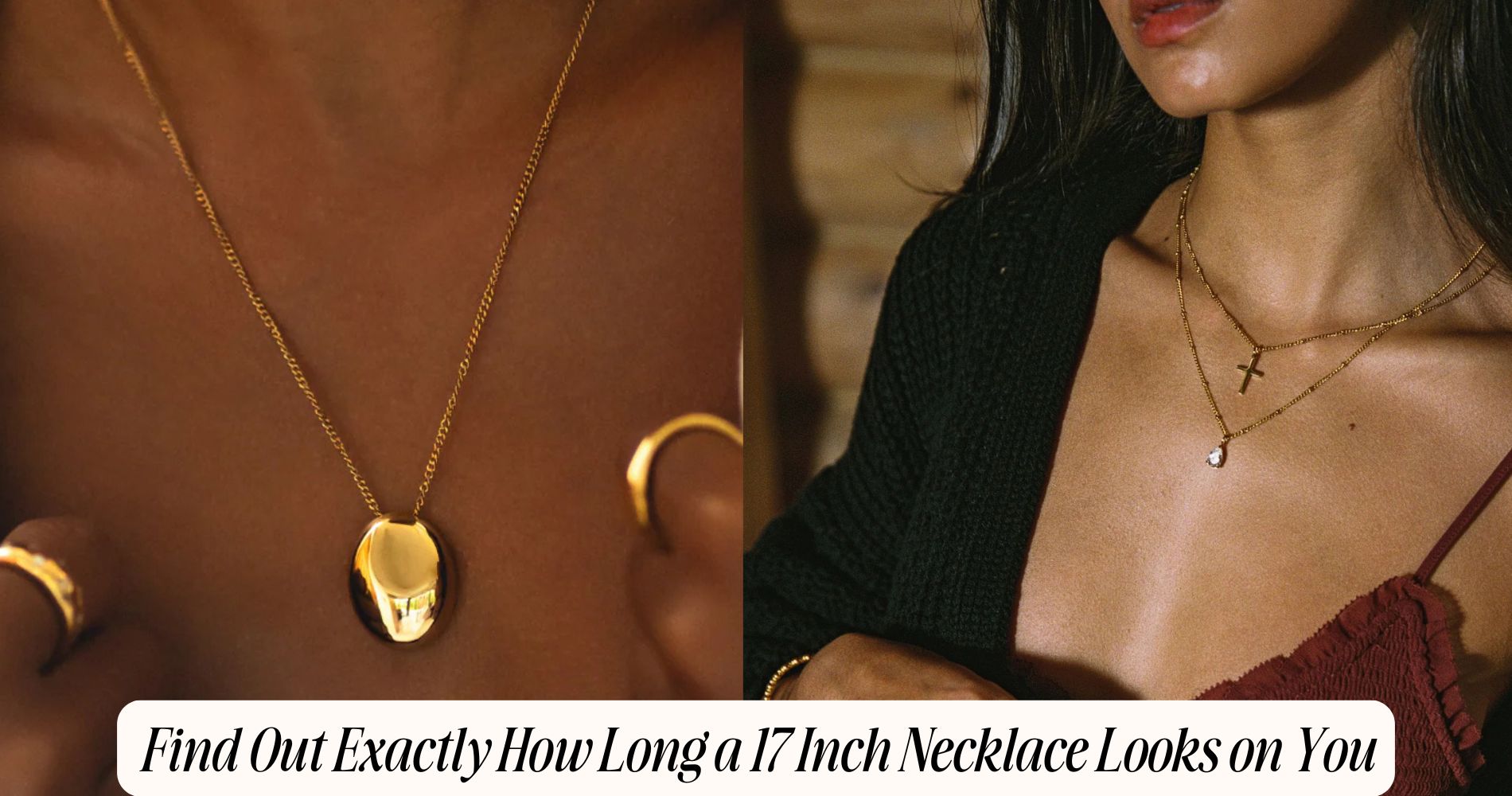




コメントを書く
このサイトはhCaptchaによって保護されており、hCaptchaプライバシーポリシーおよび利用規約が適用されます。